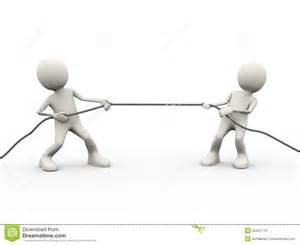by jcooper131 | Jul 19, 2016 | Houston Mediation and Arbitration

Wheel on train service vehicle
No single element in a conflict stands alone, and no conflict arises from one single reason. There are multiple factors and these are better understood when they are placed in relation to a wheel as discussed below.
Structure, emotion, history, communication, and values are elements/factors that influence the dynamics of conflict in the workplace. All of these exist to some degree in every conflict, and how they interact and influence each other often drives the direction and the severity of a particular conflict.
Professors Bernard Mayer, Ph.D. and Christopher Moore, Ph.D;’long time students, teachers, and practitioners of conflict resolution, created a graphic in the form of a wheel to help those who want to avoid, mitigate, and when necessary resolve conflict. Each of the above elements, viewed as a section of the wheel, form distinct aspects of a conflict, and those confronting conflict can use this representation as an aid to thinking their way through the minefield that is conflict in today’s workplace.
In the coming weeks I will use this space to discuss each of these factors and why looking at them individually is a necessary first step in understanding the larger picture. The concept of the Wheel of Conflict is important for those trying to resolve conflict because it helps them understand the complex and tense emotions that are present in these situations. The wheel reminds us that one’s point of view is not necessarily shared by the others involved in the conflict.
I will discuss structure in more detail in my next post, but for the moment I will leave with Messrs Mayer and Moore’s description that it is in part “…the dynamics of the participants that might be creating the conflict, for example, boss and employee…”
by jcooper131 | Apr 22, 2016 | Houston Mediation and Arbitration
 The word Argument is heard often in the field of conflict resolution. It is one of the words heard most often when a conflict is examined during the course of a mediation or even a post-mediation lessons learned process.
The word Argument is heard often in the field of conflict resolution. It is one of the words heard most often when a conflict is examined during the course of a mediation or even a post-mediation lessons learned process.
It is an important word with broader application that one gets by listening to what goes on around them. Many of us hear every day that someone got into an argument with so and so. All of us can benefit by the reminder that the most common understanding of this word is well down the list of definitions. There are a total of six definitions for this word, but one is obsolete, so only five are relevant today.
For this post, I believe the strongest benefit for us in our everyday considerations is number two on the list which is “a reason or set of reason given in proof or rebuttal”. Closely following this definition is the third definition which is “a coherent series of statements leading from a premise to a conclusion”.
Defining an argument as a quarrel or disagreement is well down the list. My point in this post, in a sense, is a continuation of my earlier post. As executives, leaders, managers, your goal is not to avoid or mitigate disagreements, but deal with them through reasoned persuasion or by reasoned argument. And lest anyone forget, reasoned argument carries with it the obligation to listen using both active listening and empathic listening skills.
Want to learn more? We can help. Call us at 832-452-8537 or write us at: jerry_cooper@att.net.
by jcooper131 | Apr 3, 2016 | Houston Mediation and Arbitration
 The companies I consult with fall into one of two camps; they know they will have problems if they are not proactive, or they have a problem and it needs resolution now. I have far too few of the first, and more than I should of the second. Periodically I remind my readers that there is real peril in not resolving conflict in a timely manner. I have written before about the adverse impact on profits, on organizational cohesion, and the impact on quality and reliability of a product or service.
The companies I consult with fall into one of two camps; they know they will have problems if they are not proactive, or they have a problem and it needs resolution now. I have far too few of the first, and more than I should of the second. Periodically I remind my readers that there is real peril in not resolving conflict in a timely manner. I have written before about the adverse impact on profits, on organizational cohesion, and the impact on quality and reliability of a product or service.
Many studies over the past 25 years give ample empirical evidence of the damage resulting from conflicts that are ignored. So why do so many companies shy away from explicitly preventing conflict or confronting conflict once it begins to impact the organization. What is it about a company’s culture and the leadership that shapes that culture? Let’s face it folks; a conflict produces a lot of early warning signs, and it’s the leader’s job to heed those warnings and change whatever is producing those clear warnings. When they fail to act, to adjust, they are failing as leaders.
When I meet with a CEO or his key executives I ask each of them some simple questions.
Do you avoid talking about conflicts that inevitably appear?
How proactive are you in promoting procedures and processes for training managers and employees in conflict resolution?
How aware are your employees of the various techniques and tools available to them to prevent, mitigate, or resolve conflict?
The responses to these three questions varies greatly, and that is why I stay busy.
Want to learn more? Visit us at www.cdci-mediation.com, or call us at 843-452-8537.
by jcooper131 | Mar 22, 2016 | Houston Mediation and Arbitration
 Most conflicts in the workplace can be avoided. This is nothing new; you have probably heard that before. So why is it so difficult to prevent conflicts from erupting in the workplace damaging relationships, organizational cohesiveness, productivity, and so many other important facet of the organization? Regrettably, we are conditioned to take actions and make decisions that exacerbate the potential for conflict.
Most conflicts in the workplace can be avoided. This is nothing new; you have probably heard that before. So why is it so difficult to prevent conflicts from erupting in the workplace damaging relationships, organizational cohesiveness, productivity, and so many other important facet of the organization? Regrettably, we are conditioned to take actions and make decisions that exacerbate the potential for conflict.
No conflict lands on your desk fully formed “out of the blue”. While it may have caught you by surprise, it was building just beyond your horizon, and like a hurricane, it gave you a number of warnings that you either did not see, or did not interpret correctly. No conflict begins without someone or more than one ignoring the first building block of any conflict – a disagreement.
The disagreement is the easiest of the potential conflict hurdles to overcome. By definition it simply means that you face a lack of consensus. Today, in thousands of offices, the executive, the manager, the team leader is telling the group there is a new project, program, or major purchase. The teams form, and the initial strategies discussed. Before too many days pass disagreements will start to show up.
At this point no one is right and no one is wrong. A lack of consensus simply means different members of the team see the path to success differently. The first rule is do not defend your point of view. Begin by listening to the other members of the team, explain your point of view at the appropriate time, and discuss the differences. The disagreement stage is not the point in the process where one stakes out positions and begins to mount a defense. That is a recipe for failure.
Want to know more? Feel free to contact us at 832-452-8537, or 281-531-8133; or E-mail us at jerry_cooper@att.net.
by jcooper131 | Mar 7, 2016 | Houston Mediation and Arbitration

used by permission of Microsoft
I read an article on the power of the short sentence not long ago. The blog post caught my attention because the writer used the works of Ernest Hemingway to make her point. I have several of his books and re-read one or two of them each year, and I agree with the woman who wrote the article. It is his use of the short sentence that adds power and drama to his stories.
In keeping with that article’s theme, I will keep it pithy (to echo a certain television commentator). Conflict needs to be resolved by the parties that created the conflict in the first place. As a mediator, I make my living guiding parties in conflict through a briar patch of their own making, and the most successful mediations result from negotiations the parties take ownership from the start. In mediations where the parties have the most positive outcomes are those where, once I have set the stage, the parties find the outcome they need.
Many years ago I read a book about whale hunting in the 19th century. In the book there is a scene where the whales have been spotted, and the boats lowered into the water. As the boat crews are rowing toward the whales, the bo’sun is giving instructions to a rookie sailor. He looked the rookie in the eye and told him that once the whaleboats were in the water, the most important job was not steering the boat, but keeping it from capsizing.
I always find that a useful mental image to take into a mediation. Want to know more? Visit us a www.cdci-mediation.com.
by jcooper131 | Jun 8, 2015 | Houston Mediation and Arbitration

In mediation as in many aspects of business and life in general asking questions is important to the successful outcome of any endeavor. When you’re in school you are taught that there is no such thing as a stupid question. The motive behind that thinking is that students have to be taught not to be afraid to ask questions.
This same thinking finds its way into business coaching and training models and this sometimes does more harm than good. By the time someone has entered the business arena in whatever capacity that person should already know that asking questions is important; so the real question, pardon the pun, is how to ask the right questions. In Jeffrey Gitomer’s Little Red Book of Selling he sets out a number of axioms about asking questions, and I will offer the following three to illustrate my point.
- What you ask sets the tone and the perception of the other party
- What you ask determines their response
- What you ask makes or breaks the deal
How he addresses these truths is worth reading because they have an almost universal application. In mediating disputes asking the questions in the right way is critical to the success of a mediation. A question phrased incorrectly or carelessly can have an immediate and adverse impact on the progress of a negotiation. Conversely, a well-crafted question can be the catalyst that advances the negotiation process.
The key is being prepared. It sounds simplistic but it’s not. Some mediations allow the mediator time to think about what questions to ask, but others occur with little time to prepare. However, those doing the actual negotiating almost always have some time to think about the questions that need to be asked. That opportunity should never be ignored; otherwise failure is the likely outcome.
by jcooper131 | Jan 20, 2015 | Houston Mediation and Arbitration
 The simple answer is yes-testing in the workplace is legal. Tests are not only critical in hiring people with the skills and competence to do the work, but they also are used to decide a candidate’s aptitude for the work. It is a widely accepted practice rooted in both culture and law. So why do companies and people get into trouble ethically and legally when implementing various tests; whether pre-employment or post employment. The reason individuals find themselves in trouble in this area is that they do not take the time to understand the rules, and there are rules related to administering tests.
The simple answer is yes-testing in the workplace is legal. Tests are not only critical in hiring people with the skills and competence to do the work, but they also are used to decide a candidate’s aptitude for the work. It is a widely accepted practice rooted in both culture and law. So why do companies and people get into trouble ethically and legally when implementing various tests; whether pre-employment or post employment. The reason individuals find themselves in trouble in this area is that they do not take the time to understand the rules, and there are rules related to administering tests.
To prevent conditions that cause companies/individuals to violate the federal anti-discrimination laws in a way that intentionally or unintentionally results in discriminate based on race, color, sex, national origin, religion, disability, or age (40 or older), any testing program has to follow:
1. Objectivity – When testing is include in the process of evaluating prospective employees, they must be objective. The purpose should, to the extent practical, be reflected in the policies, procedures, and job descriptions governing the work in question. For example, physical ability requirements have to clearly correlate to the work performed, and not be used to avoid hiring someone who is physically capable but who may also have a disability, such as a prosthetic arm or leg.
2. Validity – Closely related to objectivity, the issue of validity is important from the perspective that the tests being administered must be a true reflection of the skill or ability that the work requires. The validity of a test is established if the test conducted for the purpose of assessing the individual is appropriate to the work, and the conduct of the test will produce results that can be measured.
3. Reliability – If a test cannot measure the qualities and capabilities in a consistent way that produces measurable results, such tests are not reliable and are not valid. Reliability means that the results can be repeated over a series of tests. The term often used is replicated. It is important that tests be designed for a specific job or series of tasks.
Tests are expensive to develop and implement, and so it is essential that care be taken to make sure any testing programs a company implements or modifies be examined using these criterion. The legal consequences of failing to do so are significant.
by jcooper131 | Oct 22, 2014 | Ethics, Houston Mediation and Arbitration, Mediate Conflicts

The story of Sisyphus comes from Greek Mythology. According to the legend Sisyphus was a king who ruled through guile, deceit, and cruelty. According to the story this king’s misdeeds were so severe that the god Zeus punished him by compelling him to push a huge boulder up a steep mountain, and his punishment was that he would never succeed in reaching the top of the mountain. No matter what he tried, at some point on that slope the boulder would roll back down, and Sisyphus would have to start over again. According to the legend he could not pause and do something else; take a break, have lunch, or even rest. He was condemned to push the rock up the mountain, and when he failed, to start all over again. Over the centuries philosophers have had a field day making comparisons between Sisyphus’ dilemma and our all too human shortcomings.
Ethics and Greek Mythology
So what does this story have to do with ethics? In more modern times tasks that are repetitive and have little or no value, whether performed in a corporate or government environment have become known as Sisyphean tasks. Companies and agencies are aware of the tasks that yield little or no value, yet they are reluctant for a variety of reasons to abandon them. It is here where ethics are often compromised. Employees are well aware that some work they perform has little or no value, and the temptation to skip the task, or take a short cut can be irresistible. Once an employee begins to skip this task or perform the minimum he or she thinks will do, it is a mindset that can poison the rest of his or her work.
Ethical failures matter regardless of the tasks from which it originated. This is why it is necessary that companies have regular conversations with employees and managers about ethics so that every decision and the work affected by those decisions are executed with an ethical framework firmly fixed in the employees mind. Where low value work is found to have infected an organization, employees should not suffer in silence, but challenge the need for the work to continue.
Challenging does not mean complaining about doing the work. It means the employee should apply quality assurance/quality control methods and tools to demonstrate that this type of work is detrimental the overall performance of a department or group, and that it should be abandoned or assimilated into a related set of tasks which do provide value. Where the type of work described here is found, the following steps are recommended:
1. Compare the work against existing standards. If the work is not described in a written standard or procedure, the work must either be amended to conform to the standard/procedure.
2. Can the work be measured such that the data can be used to determine actual performance against expected performance.
3. Can a value be assigned to the work that exceeds the costs expended to produce the data.
If the work cannot conform to all three, the work should be abandoned or rolled up into other work that is more cost effective.








